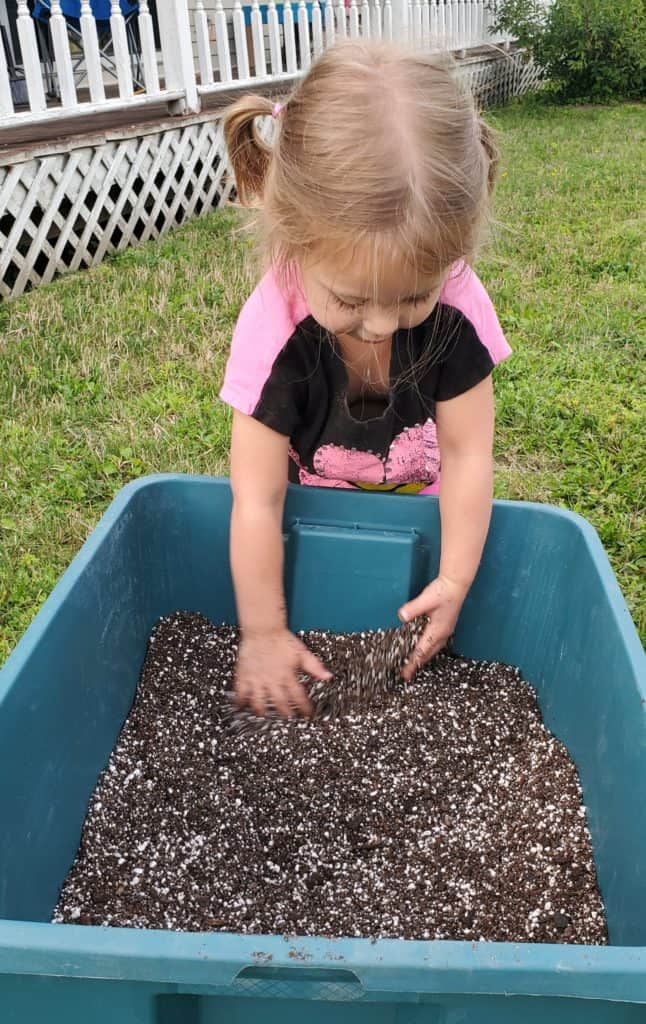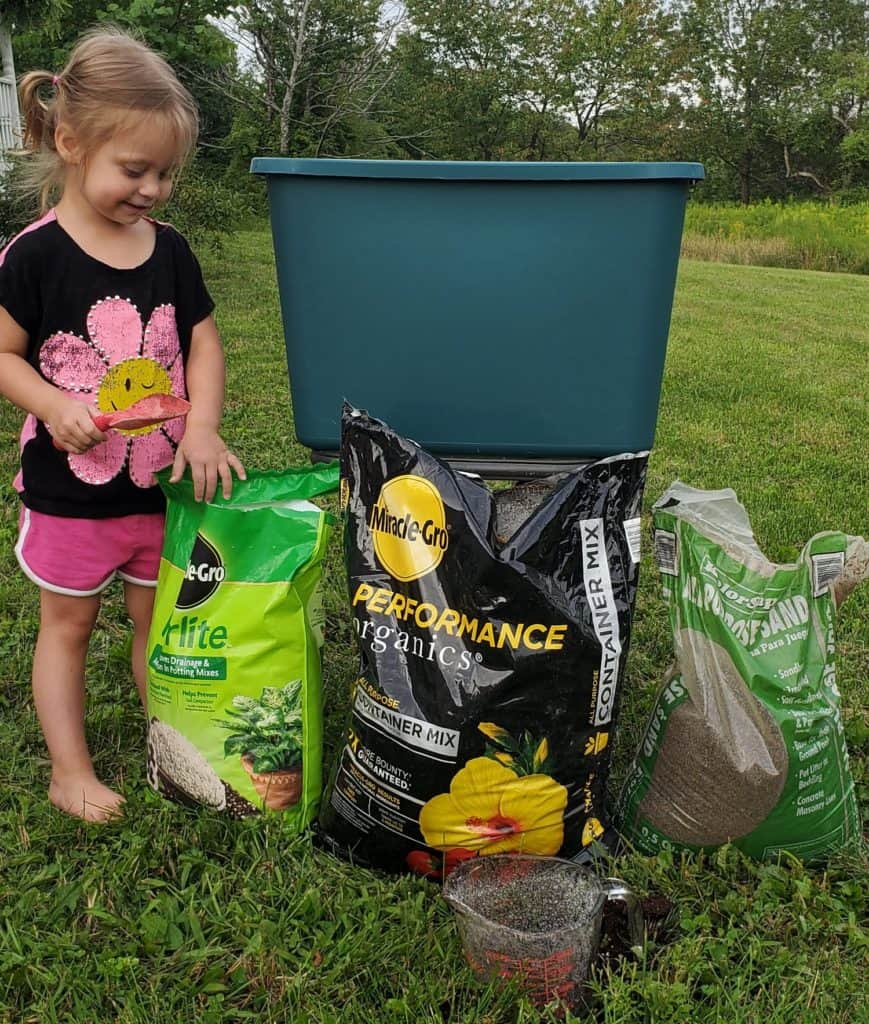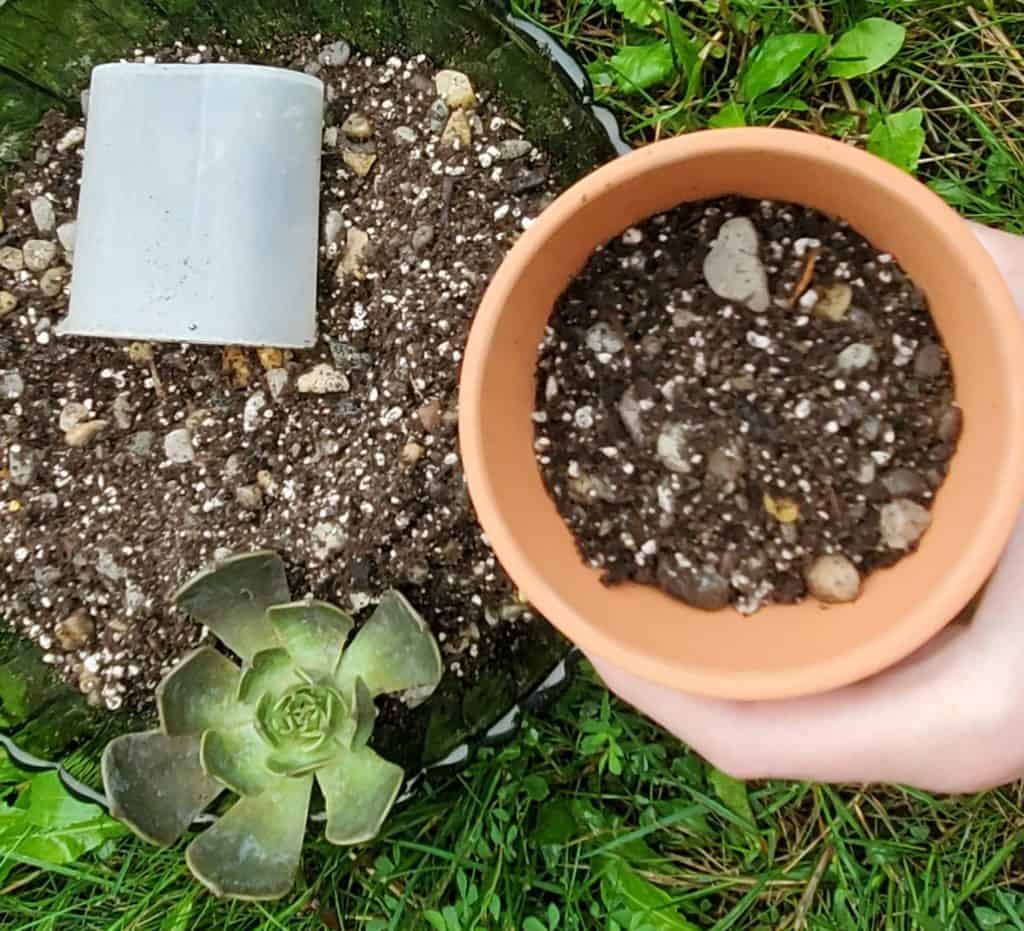Should You Use Perlite for Succulents? (The Ultimate Guide)
I absolutely love shopping online for succulents and gardening supplies. If you aren't already saving money by comparing prices online, give it a try! Here are six of my favorite things that I have purchased online as I build my own succulent oasis:
Succulents are known for their ability to thrive in dry conditions, but they still have specific soil requirements in order to grow and thrive.
Using perlite in a succulent soil mix can provide a number of benefits, including improved drainage and aeration. These benefits are important for succulents because they need well-draining soil in order to prevent root rot.
Overall, using perlite in a succulent soil mix can help to ensure that your plants have the right conditions to thrive.
I’ve compiled all of my research and experience of using perlite for succulents, including how to properly incorporate it into your soil mix and the potential drawbacks to consider.
What Is Perlite and Where Does It Come From?
Perlite is a type of volcanic glass that is formed when lava cools rapidly and forms a glass-like substance. It is a naturally occurring mineral that is mined from the earth and then processed to create a lightweight, porous material.
When heated to a high temperature, perlite pops like popcorn and expands to create a lightweight, sponge-like material. This expanded perlite is then crushed into small particles that are suitable for use in a variety of applications, including as a soil amendment for plants.
Related: Worm Castings for Succulents: A Complete Guide
The Benefits of Using Perlite for Succulents

If you’re not sure if it’s the right soil amendment for your plants, there are several benefits when using perlite in a succulent soil mix to first consider.
Improved Drainage and Aeration
One of the primary benefits of using perlite in a succulent soil mix is its ability to improve drainage and aeration. Because perlite is a lightweight, porous material, it helps to create space in the soil for air and water to move freely. This can be especially important for succulents, which are sensitive to root rot and require well-draining soil in order to thrive.
Lightweight and Easy to Use
Perlite is also lightweight and easy to use. It can be easily mixed into the soil, and its lightweight nature means that it will not compact or become compacted over time. This makes it an ideal amendment for succulent soil mixes.
Inexpensive and Widely Available
Perlite is also an inexpensive and widely available soil amendment. It can be found at most garden centers and online retailers, and it is generally less expensive than other types of soil amendments. This makes it a cost-effective option for those looking to improve their succulent soil mix.
Environmentally Friendly
Finally, perlite is an environmentally friendly soil amendment. It is a naturally occurring mineral that is mined from the earth, and it is not treated with any chemicals or additives. This means that it is safe for use in organic gardening and will not harm the environment.
Related: How to Choose the Right Pot for Your Succulent
The Potential Drawbacks of Using Perlite for Succulents
While there are many benefits to using perlite in a succulent soil mix, there are also some potential drawbacks to consider.
Easily Blown and Tracked
Because perlite is a lightweight material, it can easily be blown away by the wind or tracked around your home or garden. This can be especially problematic if you live in an area with high winds or if you have pets or children who may inadvertently carry it around.
Perlite can also stick to your hands and clothes while working with it due to static electricity. It also tends to float to the surface of your pot when watering your succulents, especially if it’s not mixed into the soil well.
Incompatibility with Certain Plants
Finally, it’s important to note that perlite is not suitable for use with all types of succulents. It is best suited for those that prefer well-draining soil, but it may not be appropriate for those that are accustomed to desert conditions. It’s always a good idea to research the specific soil requirements of your plants before incorporating perlite into your soil mix.
Related: How to Start a Greenhouse for Succulents (Indoors or Out!)
Where to Buy Perlite for Succulents
Because perlite is extremely lightweight, it’s cheap to buy it both online and in your local garden center. Depending on the season, you may not find it in stock. So, check out some of these stores and consider the prices and availability before you buy.
Amazon
It’s no surprise that you can find tons of gardening supplies on the largest online ecommerce website. Perlite is usually quite affordable on Amazon because of the ongoing competition among sellers. Simply run a search for perlite and start comparing prices. Make sure to account for shipping costs or look for free shipping.
When comparing prices, I like to calculate the cost per quart by dividing the total price by the total number of quarts. That way I can tell when I’m getting the most bang for my buck.
At the time of this writing, Miracle Gro offers the best deal on perlite for a small-scale project. If you’re looking to buy perlite in bulk, you can get an even better value with EasyGoProducts on Amazon.
Lowe’s/Home Depot/Walmart Garden Centers
I’ve always been able to find perlite in my local garden centers at stores like Walmart and Lowe’s during the gardening season. But as soon as the weather starts getting cooler, stock on supplies like perlite gets quite low.
Depending on what time of year it is, you should be able to find some near you. Check out a couple of places in your area. My local garden centers usually offer the Miracle Gro brand only.
Local Greenhouses
If you would rather support local small businesses, definitely check with some commercial greenhouses in your area. Unless they sell it in bulk/open bags, I do find the prices to be a bit higher on things like perlite. However, it is always nice to show your support by shopping at small businesses!
Related: Trustworthy Stores to Buy Succulents (Online & Local)
How to Use Perlite in Succulent Soil

To properly incorporate perlite into your succulent soil mix, follow these simple steps.
Step 1: Mix the Soil and Coarse Sand
Start by mixing together the other components of your succulent soil mix, like potting soil and coarse sand. You can use a ratio of approximately three parts potting soil to two parts sand, but the exact proportions will depend on the specific needs of your plants and the type of succulent soil mix you are creating.
Step 2: Mix in the Perlite
Once you have mixed together the other components of your soil, add perlite to the mixture. As a general rule, you should use a ratio of approximately one part perlite to three parts soil mix. Mix the perlite into the soil mix thoroughly, using a garden fork or other tool to ensure that it is evenly distributed throughout the soil.
Step 3: Moisten the Mixture
Once the perlite is mixed in, water the soil mix lightly to help settle the perlite and other components into place. Allow the soil mix to drain thoroughly before planting your succulents. This will help to ensure that the soil is well-aerated and free of excess moisture.
Overall, the key to incorporating perlite into your succulent soil mix is to experiment and find the right balance of ingredients that works for your plants. It may take some trial and error to determine the exact proportions of perlite, soil, and other components that will provide the best conditions for your succulents to thrive.
Related: How to Fix a Leggy or Tall Succulent
Perlite vs. Pumice for Succulents
Perlite is often confused with its cousin, pumice. They are both naturally-occurring volcanic rocks that are used in a variety of applications, including horticulture. While they have some similarities, they also have several important differences.
Perlite is a form of volcanic glass that is known for its light weight and high-water content. When it is heated to a high temperature, the water within the rock expands, causing it to pop like popcorn and creating a lightweight, porous material.
Pumice, on the other hand, is a type of volcanic rock that is known for its rough, porous texture and low density. It is formed when lava with a high gas content cools rapidly, creating a frothy material with a spongy texture. Pumice is often used as an abrasive material, but it is also used in horticulture as a soil amendment to improve drainage and aeration.
One of the main differences between perlite and pumice is their appearance. Perlite is typically white or off-white in color, while pumice is typically gray or black. Perlite also has a smoother, more uniform texture like Styrofoam, while pumice is rougher and more porous like a hard and dried sponge.
Another important difference between the two materials is their density. Perlite is much lighter than pumice. This makes perlite more effective at improving drainage and aeration in soil.
Tips to Care for Succulents with Perlite Soil Amendment

By following a few easy tips, you can help your succulents thrive in soil with perlite.
Make sure to use a well-draining soil mix that contains perlite or a similar amendment. Succulents don’t like to sit in moist soil for long periods of time, so a well-draining mix is essential to prevent root rot.
Water your succulents properly. Succulents grown in soil with perlite can still get soggy if over-watered. To avoid over-watering, only water your succulents when the top inch of soil is dry.
Provide adequate sunlight. Succulents need plenty of sunlight to thrive, so make sure to place them in a location that receives plenty of bright, indirect light.
Avoid temperature extremes. Succulents can be sensitive to extreme temperature changes, so try to keep them in an area with consistent temperatures. Avoid placing them near drafts or heating vents, and keep them away from cold windows during the winter months.
Fertilize sparingly. Succulents don’t require a lot of fertilizer to thrive, so only use a balanced, water-soluble fertilizer at half strength once a month during the growing season. Avoid fertilizing during the winter months when the plants are dormant.
Questions Other Succulent Gardeners are Asking About Perlite
Researching the results of other gardeners is the best way to keep your succulents alive and thriving. Here are the answers to some of the questions they are asking when it comes to using perlite for succulents.
Is perlite necessary for succulents?
Perlite is not necessary for succulents, but it can be beneficial in certain situations. Perlite can help drain and aerate the soil which can ultimately prevent root rot. Additionally, perlite can help prevent the soil from compacting, which can impede the growth of the roots.
However, not all succulents will benefit from perlite in the soil. Some succulents, such as those native to desert environments, may do better in soil with little to no perlite and more sand.
Can succulents survive in just perlite?
Succulents can survive in just perlite, but they are not likely to thrive. While it can help prevent root rot by allowing excess water to drain away from the roots, it does not provide any nutritional value to the plant.
Succulents need a well-balanced soil mix that contains a variety of nutrients to support their growth. In general, a good succulent soil mix will contain a combination of perlite, soil, and coarse sand.
So while succulents may be able to survive in just perlite for a short period of time, they will not thrive in the long term without the necessary nutrients.
Related: How to Make Your Succulents Grow Faster and Bigger
Does perlite prevent overwatering?
Perlite can help prevent overwatering by improving drainage in the soil. It allows excess water to drain away from the roots of the plant, reducing the risk of root rot.
However, it’s important to remember that perlite alone is not the solution to overwatering. Proper watering techniques and well-draining soil are both essential for preventing overwatering.
To avoid over-watering your plants, make sure to only water them when the soil is dry, and use a watering can with a fine nozzle to avoid flooding the soil.
It’s also a good idea to check the moisture level of the soil with your finger or a moisture meter before watering. By following these tips, you can help prevent overwatering and keep your plants healthy–without relying on perlite alone.
Does perlite prevent root rot?
Perlite can help prevent root rot. Root rot is a common problem that occurs when the roots of a plant are exposed to excess moisture for an extended period of time. This can cause the roots to rot and die, leading to the death of the plant.
However, it’s important to remember that perlite alone is not a solution to root rot. Proper watering techniques and well-draining soil are both essential for preventing root rot.
Related: Why Are the Tips of My Succulents Turning Red? 6 Types of Stress
Should you wet perlite before using?
It is not necessary to wet perlite before using it in soil. However, some people prefer to wet perlite because doing so can help to reduce dust and make it easier to mix with the soil. To wet perlite, simply soak it in water for a few minutes before adding it to the soil.
Regardless of whether you wet the perlite or not, it is important to remember that it should only be used in small amounts. Too much perlite can cause the soil to become too dry, which can be detrimental to the health of your plants.
Does perlite float on top of soil?
Perlite can float on top of soil if it is not properly mixed in. Its lightweight, porous material, can create a layer of white, fluffy material on the surface. This can be unsightly and can also make it difficult for plants to take root in the soil.
To avoid this problem, make sure to thoroughly mix the perlite into the soil before planting. You can use a garden trowel or your hands to mix the perlite into the soil, making sure to break up any clumps and distribute it evenly throughout the soil.
Related: How to Repot Succulents (A Complete Step-by-Step Guide)
Is perlite just Styrofoam?
No, perlite is not the same as Styrofoam. While they may look similar, they are made from different materials and have different properties.
Perlite is a naturally occurring volcanic material. Styrofoam, on the other hand, is a synthetic material made from expanded polystyrene. It is commonly used as a packaging material and for insulation, but is not suitable for use in soil mixes.
Unlike perlite, Styrofoam does not have any beneficial properties for plants and can actually be harmful to the environment. They are not the same material and should not be used interchangeably.
Should you wear a mask when handling perlite?
It is always a good idea to take precautions when handling any type of dust or debris, regardless of its toxicity. When handling perlite, it is recommended to wear a dust mask to prevent inhalation of the fine particles. This is especially important if you are working with large amounts of perlite or if you have respiratory issues.
In addition, it’s a good idea to wear gloves and safety glasses to protect your hands and eyes. Perlite can be rough and abrasive, and it’s possible to get small particles in your eyes or on your skin. By wearing gloves and safety glasses, you can help prevent irritation and discomfort.
Can perlite be toxic?
Perlite is not toxic and is not known to pose any significant health risks to humans, animals, or plants.
Related: How to Get Rid of Mealybugs: A Step-By-Step Guide
It’s Safe to Use Perlite to Amend Your Succulent Soil Mix
Ultimately, perlite is a great soil amendment for succulents. I use it in all of my potted succulents, and it really helps keep the soil from compacting and holding too much moisture.
Succulents are easy to grow–as long as you give them what they love: well-draining soil, sunlight, and occasional water. You can truly lengthen the life of your plants by introducing them to perlite.
Related: How to Choose the Right Grow Light for Your Succulents
